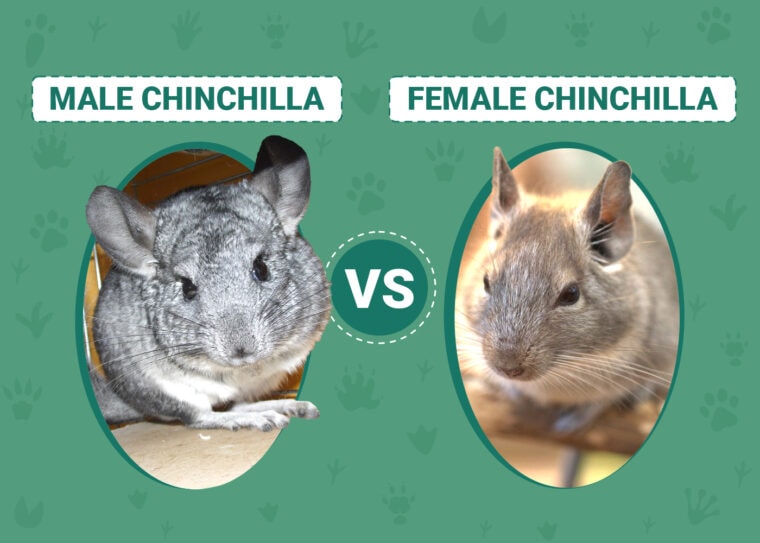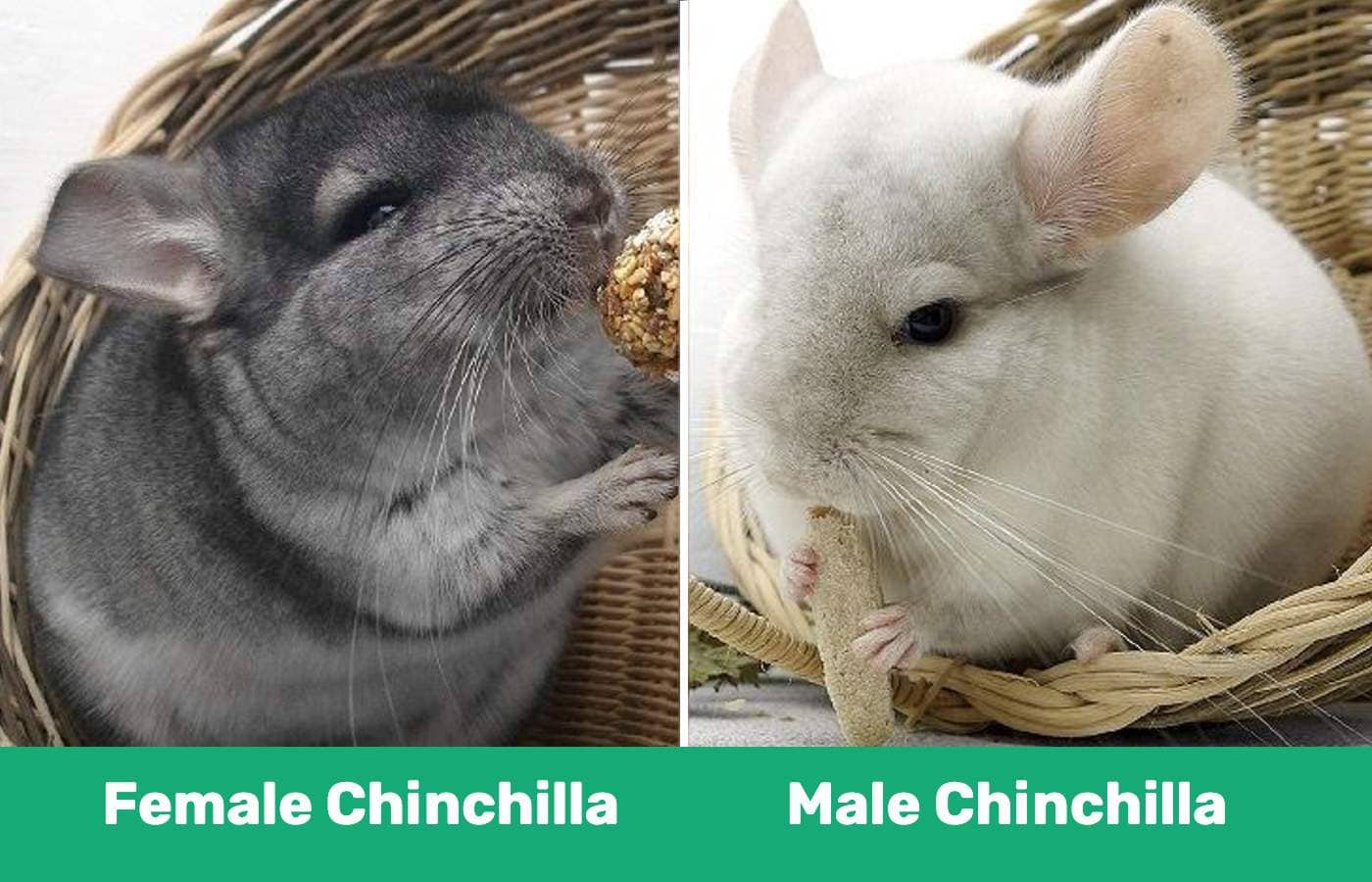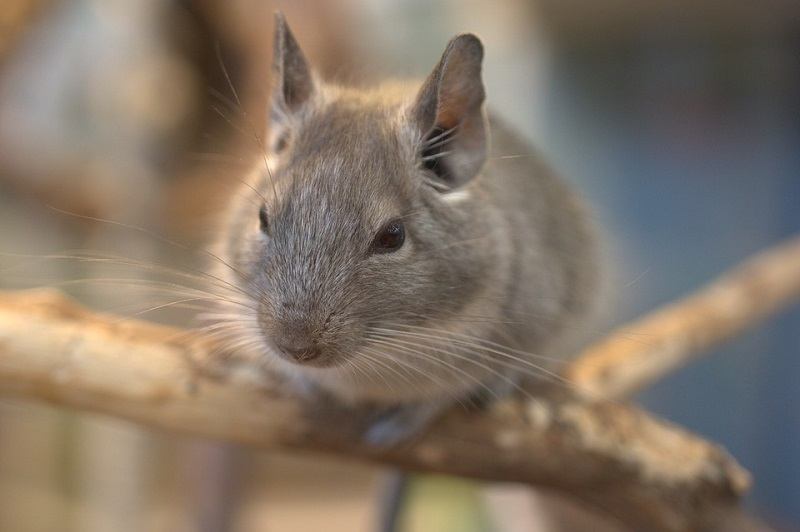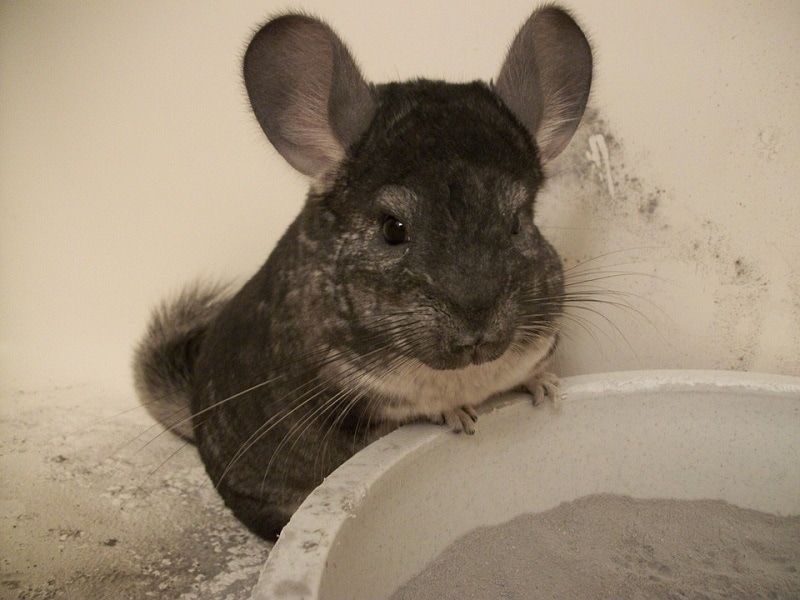
Click to Skip Ahead
Chinchillas may be one of the softest, cutest rodents on the planet. When you finally decide to get a plush chinchilla—you have a big decision right off the rip. Should you get a male or female? Even at the pet store, do they really know the difference? Sometimes, trained professionals can get it wrong, too.
Chinchillas should stay in pairs or trios because they are social creatures. So, especially if you’re getting multiple, you might not want to get a little surprise birth of babies—no matter how cute they might be. Let’s go over the differences you can expect between the two genders and learn how you can tell yourself.
Visual Differences

At a Glance
Female Chinchilla Overview

Although there is no way to really split the differences between male and female personalities, there will be notable differences in terms of care. Females might be easier than males for a few reasons.
Cage Mates
Females get along easily with other female cage mates. If you have a few females together, the mood is generally laid back and friendly. Instead of being rivals, they will usually pack together in a tight-knit group.
Adding in a male knowingly might not be the wisest choice unless you’re actively ready to breed. Chinchillas mature quickly and can reproduce often. So, you might wake up one day to a cage full of expected baby chins with no foreknowledge on how to care for them.
Temperament
When it comes to personality, it will strictly depend on an individual chinchilla. However, females might be a little more likely to be high strung or active than their male counterparts. Since they are more spunky, they might be a little harder to hold without trying to squirm away.
Females are much milder in groups, pairing well with other ladies.
Size
Females tend to be slightly larger than males. It’s not a surefire way to sex them if you rely on this method only, but it is usually the case.
Breeding
Females reach sexual maturity between 4 and 5 months of age. However, you shouldn’t try to breed them until they’re between 8 months to 1 year old—just to make sure they’re fully grown enough to handle a pregnancy healthily.
If you plan to breed a female chin, it’s best to start the process before they are 2 years old. The gestation period for a chinchilla is 111 days.
Suitable for:
Female chinchillas are excellent picks for novice owners because they tend to be more agreeable in pairs or groups. They tend to be less territorial with other chins, so you won’t have to worry about fighting or injury as much. They will also work well if you plan to breed in the future.
Male Chinchilla Overview

As with the female, no distinct personality differences exist in a male chinchilla. Your furry buddy will have special quirks all his own. But they do behave differently with fellow mates—and they sexually mature very fast.
Cage Mates
One male will typically get along very well with other female cage mates. However, you can expect almost immediate reproduction. Chinchillas may quickly and reach sexual maturity within 4 to 5 months, so it may start much sooner than you expect.
Males might have issues living with other boys because of aggression and territorial behavior. Your chinchillas can get seriously injured in the process. You may have to treat flesh wounds, which can cause infection.
It’s still possible to have two males together, but it should be early on—preferably as babies. Males who are known to spat should always be monitored. Females are much easier to keep in pairs and groups, so males are a little more challenging for novice owners.
Temperament
Males can be very territorial. Introducing a new male chinchilla when both are fully grown might never work out. They could take this as a direct threat of what’s theirs—and there will definitely be squabbles until the hierarchy is established.
In this sense, they can be much more temperamental than females.
Size
Males might be a tad smaller than females, but that’s not always true—so, never rely on the size to determine gender.
Breeding
If you plan to use your male chinchilla as a stud, you should start breeding them before 2 years old. Male chinchillas are at their prime between the first 1-2 years of life. Typically, professionals recommend starting this process between 7-8 months old.
Suitable for:
A pair of males can come in handy if you already have females ready to breed. Or, you may have already had chinchillas in the past and are up for the challenge two boys can bring. Male chinchillas are perfect for owners who know all about a chinchilla’s particular style.
How to Sex your Chinchilla at Home
There are a few ways to sex your chinchilla. Chinchillas aren’t like rats or hamsters, who have sizable testicles that are hard to miss. They’re a little more tricky. Before you check at all, make sure your chinchilla is comfortable and secure.

If There’s a Gap, it’s a Chap!
If you look under the tail base, you’ll see their anus connected to another opening. Both males and females have the same space, but males have a gap between them. Female parts connect directly to the anus. If you see the two side-by-side, it might be easier to tell.
There are some instances where it can get confusing. You may mistake a male for a female or vice versa, especially if you check too early. You can always take your chinchilla to a vet or check with the seller before purchase.
Which One is Best?
If you’re still mulling over whether to get a male or female, let’s break it down a little further. Ask yourself a few questions to pin down which gender to pick.
Is this your first pet or your first chinchilla?
If so, it might be easier to have a group of females first. Females tend to get along better with other cage mates, so they may work better for the first time.
Are you a seasoned owner?
If you have owned chinchillas before, this is probably not a big deal for you. You’re used to their behavior and care, so you can have two males without a hassle. You can manage them just fine and address any issues with sparring as they arise.
Do you plan on having multiples?
You should always have more than one chinchilla. These little furry cuties will be depressed without a mate or group of friends. You can have males or females, but males might squabble—especially after the age of sexual maturity. It’s manageable but something to consider.

Do you plan on breeding your chinchilla?
Since you can breed males earlier than females, you will need to get both males and females—but it’s important to keep them separated until you’re ready. Remember, you can have multiple females to one male—but make sure your male has a friend, too.
Do you already have a chinchilla?
If you’re thinking of getting your chinchilla a buddy, remember—always make sure they’re the same gender. Also, introduce them slowly so they can get acquainted with one another.
Which Gender is Right For You?
Ultimately, only you have a say in whether you get a boy or girl. Just remember a few things about having chinchillas.
You should never have a single chinchilla—always buy a friend! Do your best to find out the gender before you house them together. If you figure out you made a mistake later, try to separate them as soon as you can to avoid breeding too early. Oh, and boys can fight—so prepare yourself.
No matter what you decide, you’re sure to have lots of laughs and super soft cuddles with these adorable little Chilean rodents.
Read Also:
- Can Chinchillas Eat Guinea Pig Food? What You Need to Know!
- When Do Chinchillas Sleep, & How Much Sleep Do They Need?
Featured Image Credit: Female – webandi, Pixabay; Male – Lyona, Shutterstock











